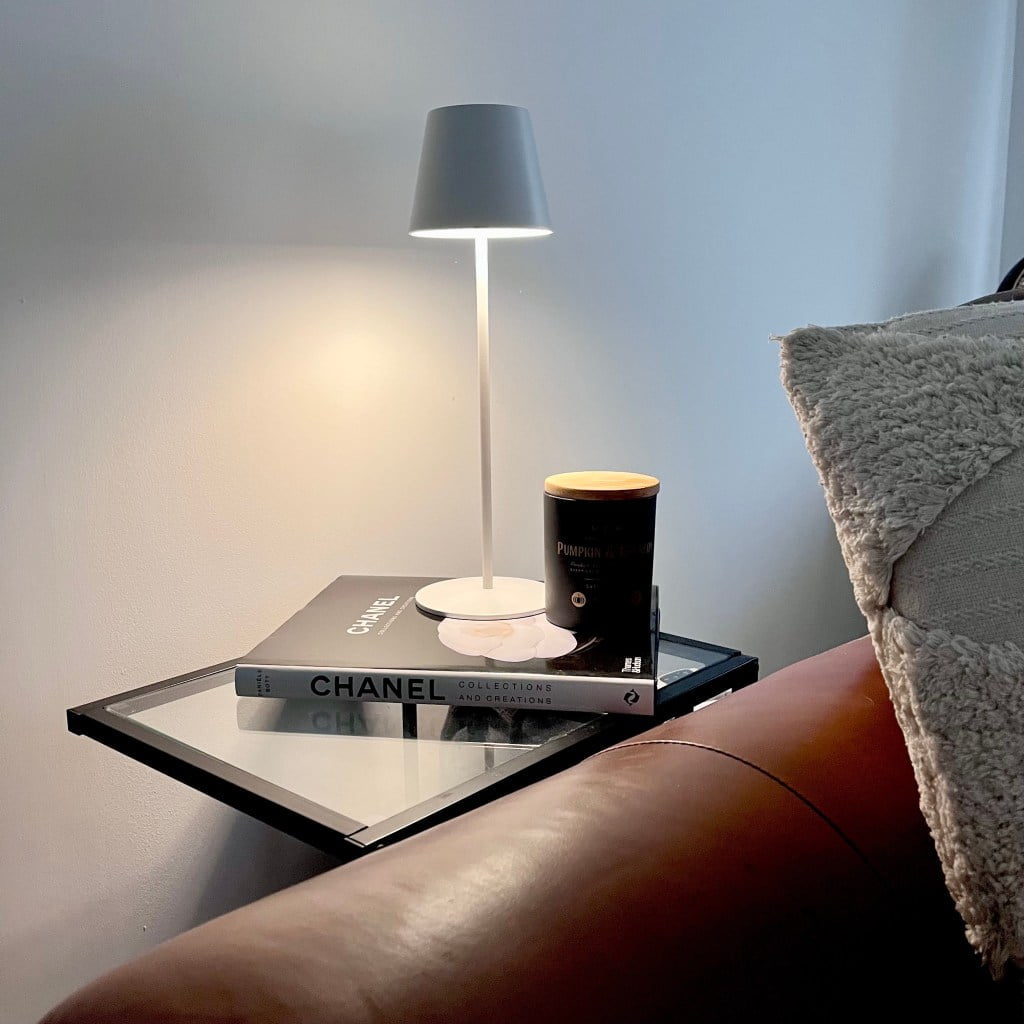The term “bookshelf wealth” may have caught your attention recently, leading you to wonder why anyone would care about the value of your parchment. However, it doesn’t refer to the actual price of your books. At a time where thousands are experiencing a cost-of-living crisis, it seems that many are finding small joys in decorating their homes with books. So, is this indicative of a growing or existing trend, or are we simply aspiring for a different type of life? And more importantly, is it promoting an unhealthy relationship with our hobby?
So first of all, what is bookshelf wealth?
"Bookshelf wealth" refers to a concept where individuals curate and showcase their book collections in a way that reflects their personal tastes, interests, and intellectual pursuits. This trend goes beyond merely owning books; it's about how books are displayed and integrated into home decor.
Unpacking “bookshelf wealth”: trends and aesthetics
From Architectural Digest to the Financial Times, an increasing number of people have noticed how book aesthetics in the home inspire others to replicate the design. If you’re a Bookstagrammer or Booktoker, you might already be following thousands of posts showcasing elegantly haphazard shelving, cosy nooks, and crannies perfect for curling up with a good book. Imagine overstuffed couches, contrasting textiles, and a swoon-worthy collection of art, complemented by, of course, lots and lots of books.
For example, the Instagram hashtag #Bookshelfie boasts over 403,000 posts, while some TikTok posts tagged with #bookshelf has garnered around eight million views. On top of this, the trend intersects two popular areas: interior design and literature.
Authenticity vs. aesthetic: the debate continues
Kailee Blalock, an interior designer from San Diego, recently shared a how-to guide on this emerging trend, which has already amassed 1.4 million views on TikTok. She explains that achieving ‘bookshelf wealth’ involves appreciating the act of collecting and surrounding yourself with items that nourish your soul. This means that besides being a keen reader, you should also focus on the additional items you place on your shelves—such as ceramics, photographs, candles, and various knick-knacks—making sure they reflect your hobbies or interests. The goal is to design the space to appear intentionally curated, rather than chaotic or cluttered.
“These aren’t display books,” the 26-year-old explained to the New York Times. “These are books that have actually been curated and read.”
However, some users commented, “If you aim for this look, you will fail. You only achieve it if it is authentic,” while others criticised the association of this style with any kind of ‘wealth,’ arguing that it reduces the art of reading to merely a fad. They contended that truly appreciating books and paintings shouldn’t be trivialised. One person mentioned they were “bookshelf poor,” pointing out that gems can be found in secondhand bookstores or charity shops, and therefore didn’t necessarily agree with this assessment.
Read: Regifting books: the art of giving away used mementos
Meanwhile, user Breana Newton responded to Blalock’s video with her own, giving viewers a glimpse of what genuine, unstaged “bookshelf wealth” looks like in her Princeton, New Jersey home. Newton displayed rooms where books abound — neatly arranged on shelves, in casual overflow piles, and scattered across the bed, reflecting her love for books rather than a deliberate pursuit of a particular aesthetic. She told the NYT her concern that TikTok’s promotion of trends like “bookshelf wealth” or “coastal grandma” might encourage excessive consumption. She also equated wealth with time, rather than with money.
I have alluded to this design trend in the past when discussing regifting and the reasons why people find it hard to let go of their books. Philosopher and journalist Julian Baggini asserts that these aesthetics are intertwined with our egos, as they supposedly showcase our intellectual depth without the need to articulate it verbally. There’s also something rather fetishistic about ogling book covers without engaging with their content. As previously mentioned, I am guilty of hoarding books, partly because I was labelled the “dumb” one in my childhood—a hang-up I am willing to admit.
What the experts believe
With this in mind, How To Be Books consulted various experts who offered their insights.

Ally Boldan, an interiors enthusiast and a PR professional in the printing industry, finds the trend to be a blend of vanity and aspiration. She argues, “Is there anything wrong with being vain when it comes to your abode? I think the idea of collecting books as an aspirational piece can be quite nice, they’re made to be admired and read, so why not use them as decor in your home and to showcase your interests and aesthetics. I also aspired to have certain books that are now part of my collection.” Boldan sees merit in the trend as long as the books are valued, regardless of whether they are collected for their content or merely their aesthetic appeal.
“For those who collect books simply for the appeal, there’s probably less of a point but it’s their home and if they wish to be perceived as book wealthy, that’s their decision.”
Ally Boldan, Interior Design Enthusiast
Read: Cost of living crisis’ impact on publishing industry – authors lose out
Barbara Basbanes Richter, a seasoned figure in the publishing industry, brings her extensive experience as a writer, the founder of writing and publishing companies, and host of a podcast dedicated to literacy and the arts. She reflects on the concept with historical context, noting, “’Bookshelf wealth’ is nothing new; my father coined the phrase ‘Instant Ivy’ about the rapid institutional growth of the University of Texas at Austin’s library in A Gentle Madness, his first book (a 1995 National Book Critics Circle Award Finalist) dedicated to chronicling the world of bibliomania.
“Bookshelf wealth suggests that those collecting and showcasing books only do it to indicate a certain level of sophistication, intelligence, and the all-important social approval, but again, it’s old hat,” the In Ink Ghostwriting founder added. Richter points out how businesses like Books by the Foot have long catered to creating instant libraries for aesthetic purposes.
Read: Finance authors share wisdom for 2024 amid cost of living crisis
The “Writing for Immortality” podcast host also observes a shift in the trend’s nature, “Bookshelf wealth is a deviation from previous book-related social media trends because the look suggests that these volumes are beloved by their owner and are displayed out of pride rather than because of the color of their covers…What we see online is rarely a genuine representation of reality. And if trend participants have indeed read all the books on their shelves, even more power to them–anything promoting literacy is terrific.”
“If bookshelf wealth can help make the world greener, I’m all for it!”
Barbara Basbanes Richter, In Ink Ghostwriting founder
Richter also contemplates the trend’s deeper implications as, “there’s a yearning to showcase ‘authentic’ living, and books express that sentiment. Though we are more ‘connected’ with our peers than ever, many of us feel isolated and lonely. Books conjure feelings of coziness, warmth, and authenticity.” She contemplates whether this change is due to the “unrelenting march of AI” and that perhaps subconsciously, “we fear AI is stripping humanity of our cognitive abilities and that we are being rapidly reduced to fleshy irrelevance.”
Read: Sustainability in publishing: unveiling the greenwashing debate
However, she also highlights an often-overlooked benefit: “Acquiring secondhand books through companies like Better World Books, Thrift Books, and Goodwill gives orphaned and abandoned books new homes and keeps them out of landfills.”
While T. Alan Horne, an author and publisher, offers a personal perspective on the significance of a well-stocked bookshelf, stating, “‘Bookshelf Wealth’ is more than an aesthetic statement; it represents the tangible accumulation of one’s intellectual journeys. Showcasing a personal library offers a glimpse into one’s character, interests, and even intellectual lineage, facilitating connections with others beyond superficial interactions.”
“A full bookshelf is a statement not only of the spending money you have dedicated to books, it is a map of your personal reading journey.”
T. ALAN HORNE, ‘ADVENT9’ AUTHOR
The “Advent 9” and “Secret Sky” author stresses the intrinsic value of physical books in an increasingly digital world, “A bookshelf can instantly communicate your interests, values, and intellectual curiosities to a visitor, providing a profound, immediate insight into your persona without the need for lengthy conversations.”
Why books need to be read

In this context, I’m reminded of a “Friends” episode where Ross gifts Phoebe a bicycle, and she avoids riding it. He tells her, “It’d be like you having this guitar and never playing it. Okay, this guitar wants to be played. And this bike wants to be ridden. And if you don’t ride it, you’re killing its spirit. The bike is dying.” Similarly, every book is waiting to be picked up and explored. Authors pour their hearts and souls into their writing, and we do them a disservice if we reduce their work to merely a simple object.
Hence, while the perspectives on “bookshelf wealth” vary, the common thread is the recognition of books as more than just items; they are seen as extensions of our identities, interests, and intellectual journeys. Whether viewed through the lens of vanity, aspiration, or authenticity, the trend underscores a deeper societal yearning for connection, reflection, and perhaps a counterbalance to the digital and artificial intelligences that increasingly infiltrate our lives. But the bottom line is: read your books, don’t just build a nook.
[…] Read: Bookshelf wealth: what it’s about and why it’s 2024’s biggest design trend […]